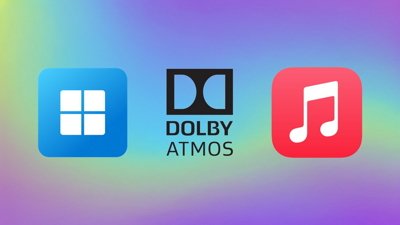Samsung Display, the largest OLED manufacturer in the world and a key display supplier for Apple's entire range of products, was rumored to spin off its OLED business as a separate entity from its money-losing LCD operations. But the company later issued a statement denying the report [updated]
Citing an official familiar with the company's decision, The Korea Times originally reported on Monday that Samsung Display has separated from the OLED business devision, and some employees have shifted to the new OLED-focused outfit. The decision was made to help Samsung restructure some of its unprofitable businesses, as LCD production for phones and tablets has become less sustainable due to cheap Chinese competitors.
The official said the move will give Samsung an "exit strategy" from the LCD business, as the legacy display technology is no longer profitable. Samsung still plans to remain in the LCD business, particularly with its HDTV lineup, but sees OLEDs taking a larger share of the personal computing market for small- and mid-size displays.
Update: Samsung Display contacted AppleInsider to deny the Korea Times report, saying it has not spun off its OLED business and that it plans to continue developing both LCD and OLED products.
Monday's report reiterated earlier claims that Samsung has won the bulk of assembly for an OLED display expected to be found in Apple's 2017 iPhone. Reports have suggested that the 10th-anniversary iPhone will be a radical redesign, featuring an edge-to-edge curved OLED display that will conceal the Touch ID fingerprint sensor, camera and speaker within the screen itself.
Apple currently has one OLED product in its lineup, the Apple Watch. As the largest OLED maker in the world, Samsung is believed to handle a share of the supply chain for the wearable device's display.
Samsung also builds LCD panels for Apple's wide range of products, including the iPhone and iPad. Apple is said to have passed on OLED in the iPhone thus far due to costs and production bottlenecks.
 Neil Hughes
Neil Hughes








 Andrew Orr
Andrew Orr
 Amber Neely
Amber Neely
 Marko Zivkovic
Marko Zivkovic
 William Gallagher and Mike Wuerthele
William Gallagher and Mike Wuerthele



 Mike Wuerthele
Mike Wuerthele









14 Comments
China's strategy of dumping continues to decimate all competitors.
Apple Insider:
"Apple is said to have passed on OLED in the iPhone thus far due to costs and production bottlenecks."
Yeah, those pesky production bottlenecks that only need a few little fab tweaks to solve:
http://appleinsider.com/articles/16/01/14/samsung-to-invest-up-to-747b-in-developing-flexible-oleds-for-future-iphones-report-claims
In other words, let's not perpetuate the myth that this is a long-overdue switch to OLED finally as slow and plodding Apple fixes a few "bottlenecks" by spending a bit more of its cash.
Your ealier story shows that it could not have happened until the Korean display makers mastered the technology well enough to commit billions to expanding production facilities.
All we *think* we know about Apple and OLEDs, is that they might be moving to them in 2017. Why people think there will be a wrap around screen, I don't understand. These are just mock-ups from people who know nothing about what Apple is planning.
So, will we see OLEDs in 2017? Possibly. Will we see a wrap around screen, um, well, maybe, but why?